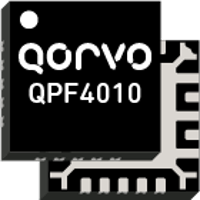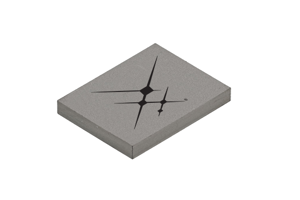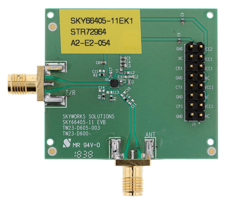Front-End Modules
PRODUCTS AND SERVICES
The SKY58107-31 meets strict 5G NR and LTE advanced requirements where wider bandwidth (100 MHz) and carrier aggregation are used for higher data rates.
The QPF4010 is a high frequency, high performance MMIC front-end module targeted for 5G - n258 at 26 GHz phased array base stations and terminals. It is fabricated on Qorvo's 90 nm pHEMT production process and combines a low noise high linearity LNA, a low insertion-loss high-isolation TR switch, and a high-efficiency multi-stage PA.
The SKY66431-11 is a multi-band multi-chip System-in Package (SiP) supporting 5G Massive IoT (LTE-M/NB-IoT) platforms.
The SKY85309-11 from Skyworks is a fully matched front-end module (FEM) that integrates 2 GHz single-pole, double-throw (SPDT) transmit/receive (T/R) switch, a 2 GHz low-noise amplifier (LNA) with bypass, and a 2 GHz power amplifier (PA). It is ideally suited for 802.11ac networking and personal computing systems, PC cards, and WLAN-enables wireless video systems.
The SKY78113 SkyOne® Ultra 2.0 is a multimode multiband front-end module (FEM) designed for optimal performance in CDMA/WCDMA/HSPA/HSPA+/FDD LTE-modulated handsets for bands 26, 8, 12/17, 13, 20, 28, 29, BC0, and BC10. The RF input and output ports are internally matched to 50 ohms which minimizes the need for external components.
Skyworks' SKY66403-11, SKY66404-11, SKY66405-11, and SKY66112-11 are 2.4 GHz front-end Modules for Zigbee®, Thread, and Bluetooth® Applications.
The SE2435L and the SKY65378-11 are Skyworks’ high-powered and low-powered RF front-end modules (FEMs) designed specifically for industrial, scientific, medical (ISM) band applications with operation in the 860-930 MHz frequency range. These devices feature fully matched 50 W TX and RX inputs and antenna outputs, and RF blocks that operate over a 2.0-4.8 V range for use in a wide range of battery powered applications.
Qorvo’s integrated front end modules (FEMs) are included with a compact form factor and integrated matching that minimizes the layout area in Wi-Fi 802.11 a/n/ac and 802.11 b/g/n system applications. Their performance is focused on conserving power consumption while maintaining the highest linear output power and leading edge throughput.








